NASA Eyes Printable Moon Base
Space travel is an expensive business. It costs around £8,500 to put a pound of payload into orbit – any payload. Astronauts, their food and personal equipment, scientific instruments, it doesn’t matter; getting it far enough into space that it won’t come down again is going to cost about £18.72 per gramme. Space engineers work hard to minimise the weight of every piece of equipment that gets launched, and they’re pretty successful in most cases. However, there are limits on what can be achieved. For example, if you’re planning on building a permanent base on the moon you need construction materials, and there isn’t a lot that can be done to make those lighter.
As it happens NASA are considering a permanent base on the moon. The space agency thinks it’s found the ideal spot – Shackleton Crater, near the moon’s south pole. This spot gets almost constant sunlight but NASA believes the shadowed inside of the crater contains ice, which could be mined to provide drinking water, oxygen and hydrogen. A base there wouldn’t need as many supplies to be flown from Earth.
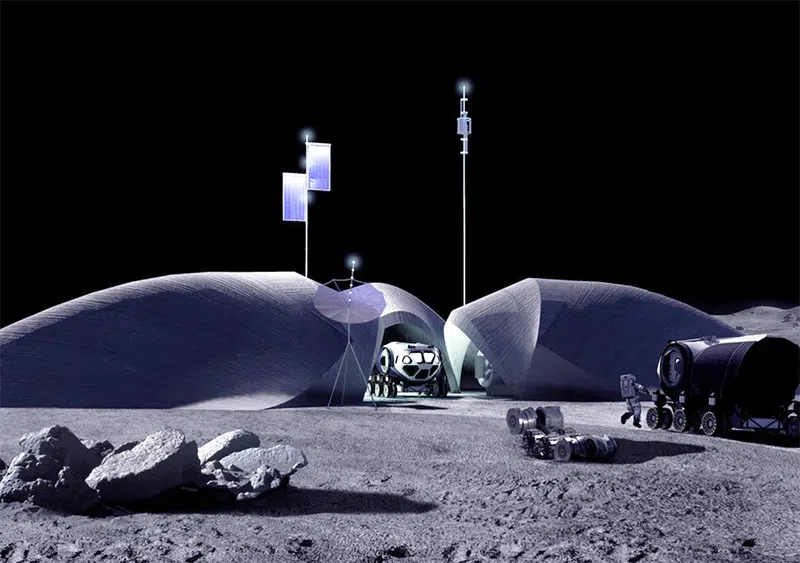
NASA’s plan is to build a base near the moon’s south pole.
There’s just one problem; the moon is a dangerous place. With no atmosphere, it’s constantly hit by micrometeorites and bursts of lethal solar and cosmic radiation. If humans are going to spend extended periods on the moon they’ll need accommodation that can protect them from these hazards, and a lightweight structure just can’t do that. Lunar buildings need thick walls to block radiation, and enough mass to soak up the impact of tiny micrometeorites moving at thousands of feet per second.
At £8,500 a pound NASA obviously don’t want to be sending a few thousand tons of bricks and cement to the moon, but without a large quantity of heavy building materials a moon base isn’t going to happen. And that’s where 3D printing comes in.
3D Printing On The Moon
3D-printed buildings are nothing new, of course. We’ve looked at several large printers that can print with concrete, creating homes or military structures. They’re obviously not going to help NASA, though. It might be possible to make concrete with cement and moon rock, but that would still mean lifting a lot of cement to the moon. A 25kg bag of Blue Circle costs £6.10 at Wickes, then another £467,500 for next-day delivery to Shackleton Crater. Up until now it’s been impossible to make concrete without cement, but now 3D printing specialist AI SpaceFactory have a solution.
There are plenty of filaments made of PLA blended with other materials – we’ve reviewed a few of them – and now AI SpaceFactory have adapted that concept to develop a print material that can be easily produced in space. The key is the fact that PLA is a biopolymer; it’s processed from plants. Our everyday filament is made from corn starch, but a whole range of plants can be used. Some of these plants can be grown in space, so all that has to be launched is the seeds and containers to grow them in. Once that minimal weight has been lifted to the moon the plants will need sunlight and water, which the moon has. The final element is carbon dioxide, and every spacecraft has systems to filter that out of their internal air.
Once plants have been grown and processed into PLA the plastic will be mixed with lunar dust, which is called regolith. The moon’s dust is very fine because it’s been constantly pounded with micrometeorites for over four billion years, and that makes it ideal for blending with PLA. AI SpaceFactory have tested it with simulated regolith, which NASA have been making for years, and it turns out to be an amazingly strong material. In fact it has three times the compressive strength of concrete, and is much better at resisting temperature changes. Concrete can crumble if it’s subjected to repeated freeze/thaw cycles; this new printable material doesn’t.
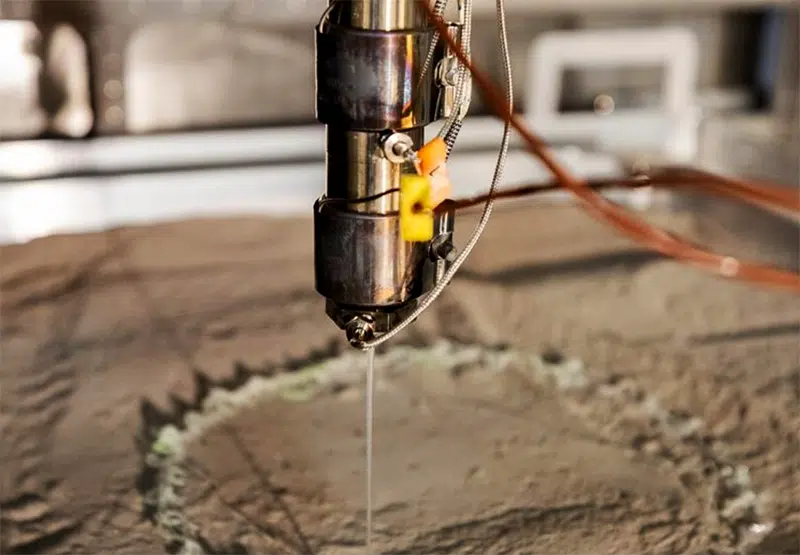
The PLA-based material can be printed directly onto the moon’s surface.
NASA’s plan is to print lightweight structures, then take advantage of the material’s compressive strength by covering them in a nine-foot (2.7m) layer of regolith. That will give the mass needed to block radiation, and the thick regolith will soak up the impact of micrometeorites before they reach the printed walls. The structures themselves will use complex arch shapes that would be impossible to make with conventional building materials, but they’re no problem for a 3D printer.
AI SpaceFactory have already tested their printer with a material made from simulated Martian regolith. Working in a vacuum chamber to simulate low pressure and temperature, the machine printed a 1/3-scale replica of a different structure designed for use on Mars. The next step is to print a prototype of the lunar housing design. If that works, within a decade NASA could have the printer installed on the moon and printing a moon base with locally produced materials.

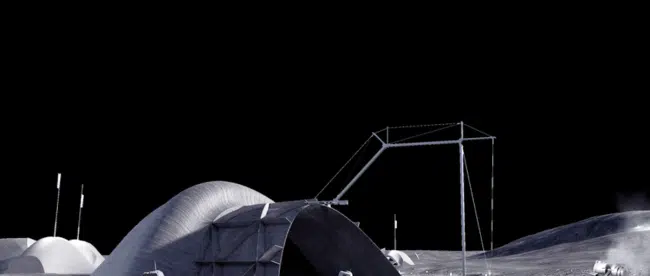
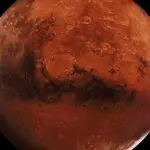
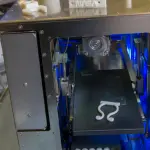
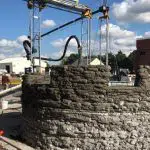
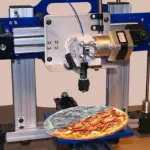
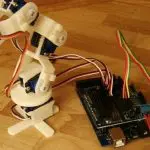

Leave a comment
You must be logged in to post a comment.